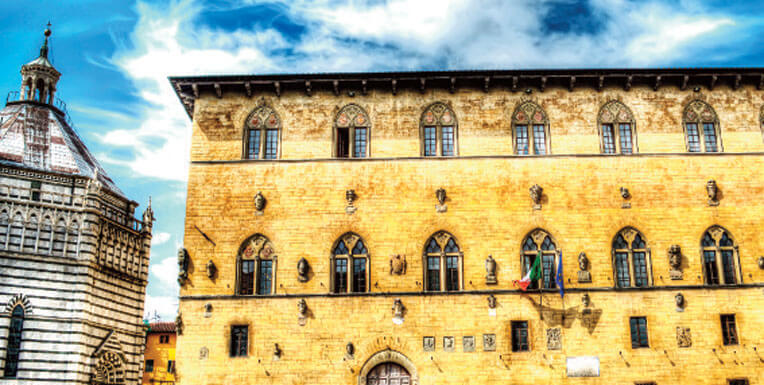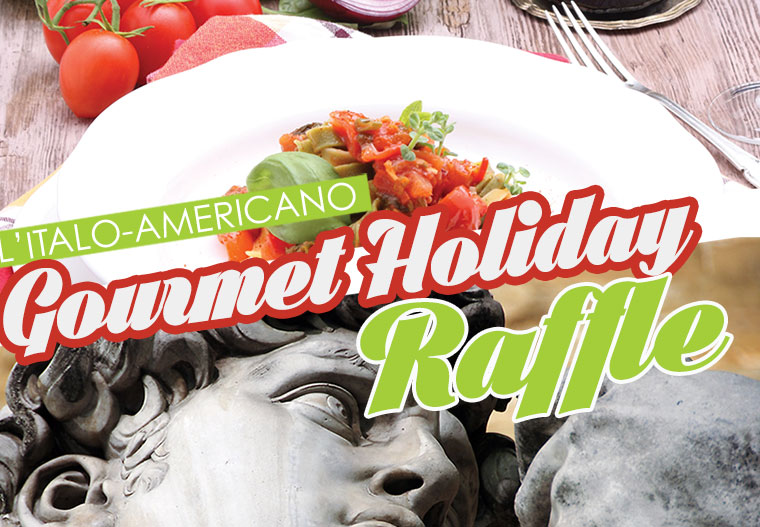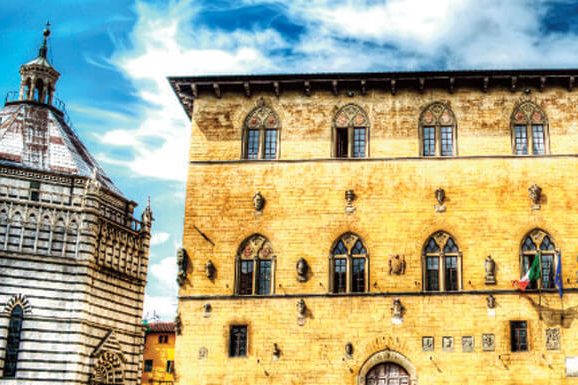Next year promises to be big for Pistoia. This little-known town in the north of Tuscany has just been chosen as the Italian Capital of Culture for 2017. And as the world’s press turn their spotlights on the town, we discover there’s a lot to like about this unassuming place.
Pistoia, snuggled at the foot of the Appenines, has always suffered by comparison to its ‘big sisters’, Florence and Pisa. It’s close to both these popular destinations but so far it has kept a pretty low profile on the tourist scene, visited only by the culture cognoscenti and people looking for something a bit more off the beaten track. So it was that when Pistoia beat big hitters like Como and Pisa to become the new Capital of Culture, even the pistoiesi were a little surprised.
But now its moment has finally arrived, and many agree it’s not before time. Lonely Planet has recently named it as one of its Top 10 cities for 2017, no less. So here we’re taking you on a little journey through the city to discover exactly what it is about the place that has people so entranced.
The city centre is a compact and charming space, with the beautiful Piazza Duomo at its heart. Here you find Medieval buildings that represented the city’s religious and civic power and offer us a window onto the city’s past: the Romanesque Duomo, the Gothic Baptistery, the Palace of the Priors, and the Bishop’s Palace that today is home to an interesting museum of local historical artefacts.
In the Middle Ages Pistoia was an important stop for pilgrims travelling along the Via Francigena. The Cathedral jealously guarded some remains of Saint James, who was the very first Christian martyr. Devotees from all over Europe would stop off in Pistoia to pay homage to the saint on their to Rome.
Today the magnificent altar of Saint James is one of the highlights of a visit to the Cathedral. It’s a masterpiece of silversmithing that took two centuries, and a lot of artists, to complete, one of them being the great Brunelleschi himself.
Nearby is the small Piazza della Sala. This square is the lively soul of Pistoia, with a colourful food market, bars and outdoor cafès that keep it busy at all hours. Here you see the bustling energy that’s typical of Pistoia, a town that today is known for its culture and music scene. Every year it hosts an important anthropology festival “Dialogues on Man” that next year will revolve around the theme “Culture makes us human. Cultural movements, diversity and exchanges.” And on a lighter note, the city is also the stage for the Pistoia Blues Festival, an important contemporary music festival that has attracted some big names over the years, from BB King to Sting and Damien Rice.
The more you look around Pistoia, the more hidden treasures you’ll discover. One such treasure is the unique Ospedale del Ceppo, the ancient hospital founded in the 13th century and active until a few years ago; a place with a curious history that’s decorated with striking friezes of glazed maiolica by the Della Robbia workshop. With the Pistoia Sotterranea tour, it’s now possible to walk underneath this old hospital, to learn about its history and the part it played during the time of the Black Plague, an experience that is both eerie and fascinating.
Last but not least, there’s the work of Pistoia born artist Marino Marini, whose sculptures have been compared to those of Henry Moore. His sculptures explore the strain of modern human existence, and his work has brought him great international acclaim; Penny Guggenheim bought one of them to put in front of the entrance of the Guggenheim in Venice. There’s a Museum dedicated to Marini in Pistoia, and a big exhibition of his work is planned for autumn 2017 at the Palazzo Fabroni Contemporary Art Museum.
For anyone visiting Tuscany next year, a day trip to Pistoia surely has to feature on the itinerary. It is a vibrant city that’s alive with culture, and more than deserves its new accolade. The only question is, what took it so long to get here?






























